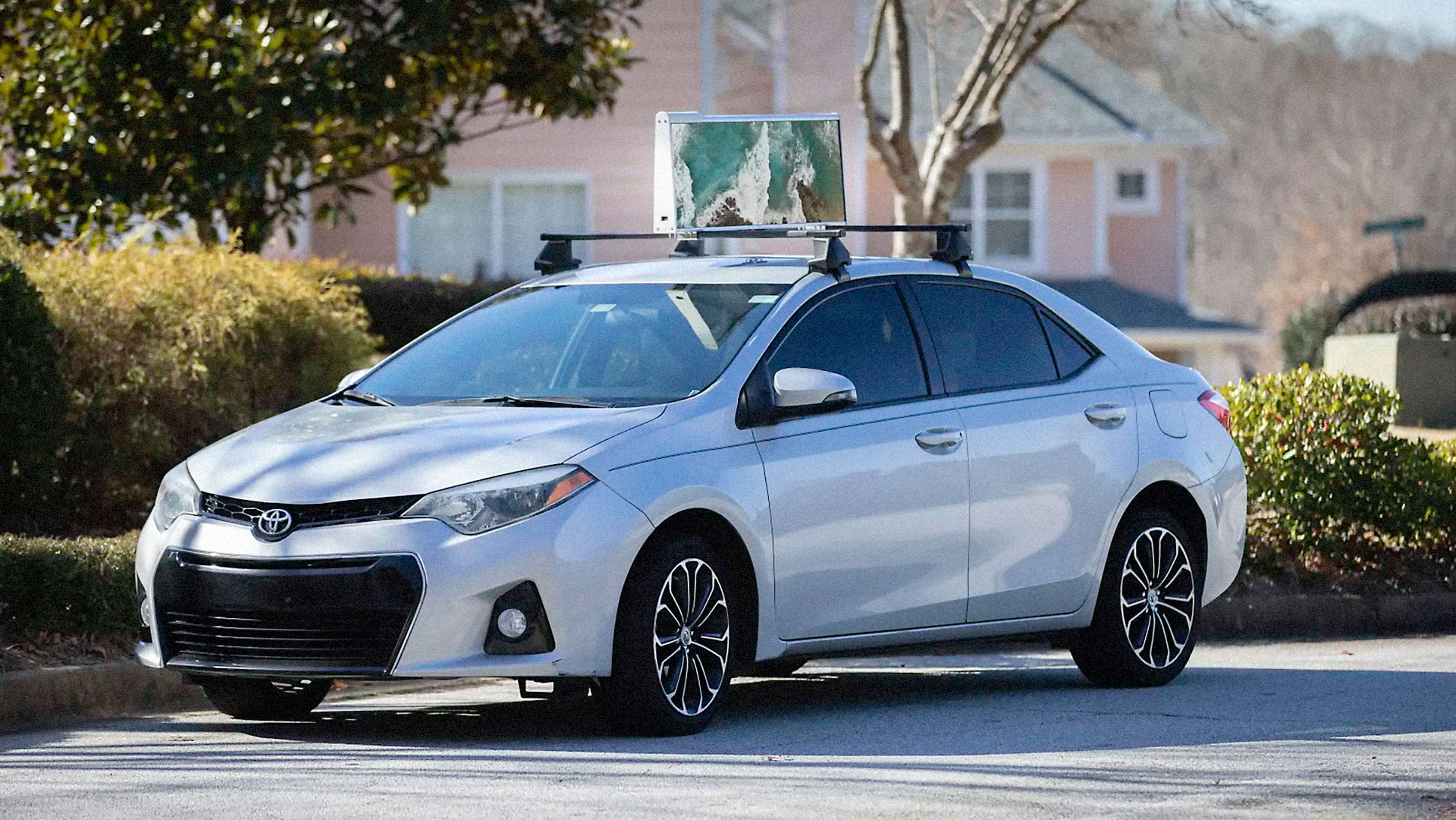Making money by connecting users to rides is a notoriously tough business. Uber and Lyft are losing loads of cash each quarter.
When both companies were flooded with venture capital funding in their first few years of operation, that wasn’t much of an issue. Thanks to VC funding, Uber and Lyft were able to offer users extremely low rates while also paying their drivers.
Then they went public. Lyft made its market debut in March 2019; Uber followed with an initial public offering that May. Those IPOs meant that the two companies now had to prove to investors they possessed viable business models and could turn a profit.
That’s where advertising comes in.
Last week, Lyft announced the creation of Lyft Media, its advertising arm. Lyft, which acquired a company in 2019 that makes monitors to run digital ads atop cars, is looking to sell ad space on in-car tablets that riders use, on digital display panels and its bike docking stations, and through in-app sponsorships. Lyft will be competing against Uber, which entered the ad business in 2019 and sells ads through both its primary app and Uber Eats, as well as offering ad displays atop its cars.
That Lyft and Uber are both putting so many resources into advertising suggests the companies are entering a new phase in their path to profitability.
“We’ve seen rideshares go from [just] rideshares to the likes of Uber Eats and delivery mechanisms, to now maybe delivering beyond just food,” Arjun Kapur, managing director and founder of Comcast’s venture group Forecast Labs, tells Fast Company.
“But you know,” Kapur adds, “there are only so many things you can do with delivery. The question is, how do you then create the next billion-dollar revenue stream for the business that would leverage the assets and capabilities of the existing business?”
For the two largest U.S. rideshare companies, the answer appears to be advertising. It makes sense, considering millions of users are looking at their phones when they book trips. Uber and Lyft have captive audiences in their riders, who are either looking at their devices while being carted around, or sitting in cars that have ample room for digital advertisements.
“Essentially, it’s a ‘We have it so why not use it’ situation,” says Randy Nelson, head of mobile insights at mobile app market intelligence firm Sensor Tower.
It also helps that the two companies have unique access to their users. Uber and Lyft could boast to advertisers that they have the capability to target ads to certain customers, based on things like travel history or food orders.
“They probably know a little bit about the person and they can get more data access and try to make them a little bit more sophisticated than your general taxi cab advertising,” Kapur says. “Even the slightest layer of data on that can tip the scales on brand advertisers wanting to put a lot more of their dollars in this.”
This could be an extremely lucrative opportunity for the rideshare giants. Uber’s ad division generated $141 million in revenue in 2021, up from $11 million in 2020; Uber executive Mark Grether said at an investor day earlier this year that the company could reach $1 billion in ad revenue by 2024. Lyft hasn’t commented on what it expects from ad revenue with its new unit.
“The generation coming into their prime as consumers has notably different views on current-day advertising, so advertisers are reworking their strategies to connect with them, and that’s somewhere these in-vehicle ads could appear appealing,” Sensor Tower’s Nelson says.
It’s unclear where drivers will fit into all of this. Lyft said that a portion of revenue from its display and tablet ads will go to its drivers, though it didn’t specify how much. Grether said at the Uber investor day that some drivers who had installed ad displays atop their cars increased their earnings by about 20% on average.
Still, the advertising windfall likely won’t be significant for drivers in the beginning, says Jeremy Goldman, director of marketing and commerce briefings at Insider Intelligence, noting that as ad sales shoot up (giving drivers a new revenue source), companies could use that growth as reasoning to keep wages low.
“I don’t even expect that to happen all that soon,” Goldman says, acknowledging that it takes time to build market share and develop the technology. “It’s really much more of a tactic to say, ‘Look what we’re doing for you, we’re buying you into this whole program.'”
Kapur argues that ads could do the exact opposite, providing another mechanism by which rideshare companies will be forced to compete for drivers.
“There’s going to be a demand-supply issue between the two [companies] that they would have to fight,” Kapur says, “so I would imagine if one does it and it works and provides more income to the drivers, everybody’s going to rush to that because they don’t want to be the one place that the drivers don’t want to use anymore. . . . That could cripple the entire core business.”
This story has been updated to correct the year in which Lyft acquired Halo Cars, a company makes monitors to run digital ads.
Recognize your brand’s excellence by applying to this year’s Brands That Matter Awards before the early-rate deadline, May 3.
